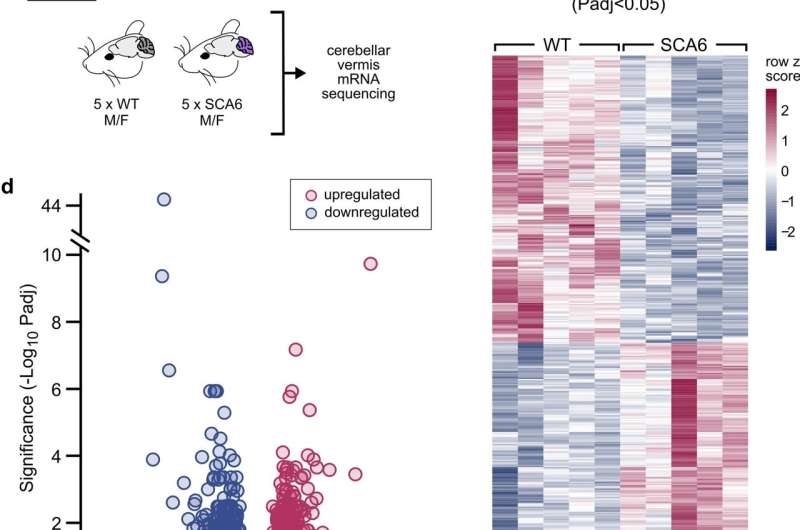This article has been reviewed according to Science X's editorial process and policies. Editors have highlighted the following attributes while ensuring the content's credibility:
fact-checked
trusted source
proofread
A promising discovery in a rare neurodegenerative disease

Imagine being middle aged and starting to feel that you are off balance a lot and that you are having a hard time coordinating your movements. Those are among the symptoms of Spinocerebellar ataxia type 6, known as SCA6, a rare neurodegenerative disease that typically appears in adulthood and worsens over time.
Over time, other problems, such as slurred speech and difficulty seeing or seeing double, may also appear. It is estimated that fewer than 5,000 people in the US have the condition, which is the result of genetic mutations in the cerebellum.
The disease currently has no cure. But this may change, thanks to a new discovery made by McGill researchers.
In a recent article in Acta Neuropathologica, researchers from McGill University, led by Professor Alanna Watt of the Department of Biology, describe a discovery, that suggests possible paths towards new treatments.
They have been able to show that damaged mitochondria in the cells of the cerebellum, the part of the brain that plays a role in movement and balance but also in cognitive functions such as language and attention, most likely contribute to the progression of the disease.
"Mitochondria are commonly known as cell powerhouses because they generate the energy the cell needs to function," said Sophia Leung, a Ph.D. student in the Watt lab and the paper's first author. "When we looked at a mouse model of SCA6, we observed that the mitochondria were failing to generate that crucial power. What's more, we found that the power outages were worsening as the disease worsened."
The researchers also found that observations of human post-mortem tissue corroborated what they had found in mice, which suggests that this finding is relevant to human disease.
"It's an exciting finding because it suggests a promising new treatment target for patients living with this disease," adds Alanna Watt, the senior author of the paper.
More information: Tsz Chui Sophia Leung et al, Mitochondrial damage and impaired mitophagy contribute to disease progression in SCA6, Acta Neuropathologica (2024). DOI: 10.1007/s00401-023-02680-z




















